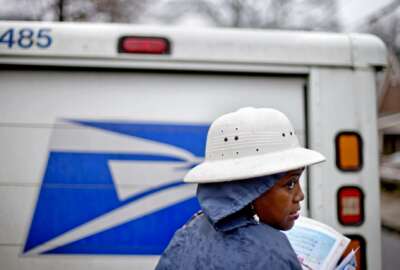
New Census mapping tool could boost response rates, ease staff burdens
With the 2020 people count nearing, the Census Bureau may have found a new way to encourage more response to its surveys.
Best listening experience is on Chrome, Firefox or Safari. Subscribe to Federal Drive’s daily audio interviews on Apple Podcasts or PodcastOne.
Hoping to relieve staff and generate higher response rates in 2020, the Census Bureau is using a new mapping tool to predict who will not return their survey forms.
The Response Outreach Area Mapper (ROAM), which launched Feb. 7, is designed for everyone to use, from the general public to bureau staff. Suzanne McArdle, a computer mapping specialist at the bureau, told Federal Drive with Tom Temin that ROAM could help local leaders and human enumerators craft “game plans” to target areas with low survey response rates.
The enumerators are workers who follow up in person with nonresponders.
“At its simplest level, ROAM is a web mapping application that shows something called the ‘low response score’ by census tracts for the entire nation,” McArdle said. “That low response score is the predicted mail nonresponse rate, or basically the rate at which we think people have the propensity to self-respond.”

The low response score is modeled on the 2010-2014 estimates from the Census’ American Community Survey, which the bureau thought was a good indicator of how people will respond in 2020. When the tool is released in June it will have the latest five-year ACS estimates available.
“So we’re able to show this low response score by census tract for the entire nation and really show a map of the hard-to-count areas across the nation, and allow people to look at the socioeconomic and demographic profile of those areas right within this web mapping interface,” McArdle said.
When a user opens ROAM, they see an interactive map of census tracts shaded on a scale from beige to dark blue. The darker the shade, the less likely it is people will respond to the Census. In addition, clicking on a tract reveals socioeconomic and demographic data which McArdle said could give analysts, community organizations and government officials a better understanding of why that area is harder to count.
“You would be able to use this tool to zoom into your own neighborhood and sort of recognize what’s going on in your own neighborhood,” she said.
The tool is available down at the census tract level, which is a typically permanent statistical subdivision of between 1,200 and 8,000 people, the optimum size being 4,000 people. A census tract usually covers a contiguous area but may vary depending on the population density, according to the bureau.
A census for the digital age
Upgrades such as ROAM support the bureau’s push to become more efficient in 2020. People will be able to respond to questions via mail, telephone and online.
The bureau will test the new survey technology in Providence, Rhode Island, next month. Meanwhile, a proposed partnership to have U.S. Postal Service letter carriers assist enumerators was scrapped earlier this year.
McArdle said the bureau have had a planning database for several years but until now, that was only available to data analysts and experts. ROAM is more accessible and she said staff are still soliciting internal feedback to improve the program.
“By creating this tool and making it available to the public right in a web browser, that’s really powerful,” she said.
The 2020 Census will also be different considering it is the first decennial count since 1950 to include a question asking people about their citizenship. According to a memorandum Monday from Commerce Department Secretary Wilbur Ross, the decision was intended to count the voting age population data at the census block-level, which the Department of Justice and court system use to determine violations of the Voting Rights Act.
Opponents of the move in Congress, as well as some states, are worried it could lead to an undercounting of immigrant populations. Response rates are related to trust, which McArdle said is something ROAM could help the bureau build with local communities.
“We recognize the difficulties in gaining trust and we recognize that different people respond in different ways,” she said. “And this tool was really built for this whole purpose of allowing us to identify those hard-to-count areas and to allow people to see who are in those areas so that they can come up with a tailored communication and partnership campaign so that the census bureau can hire people with the appropriate language skills to help encourage self-response.”
Copyright © 2025 Federal News Network. All rights reserved. This website is not intended for users located within the European Economic Area.
Amelia Brust is a digital editor at Federal News Network.
Follow @abrustWFED




